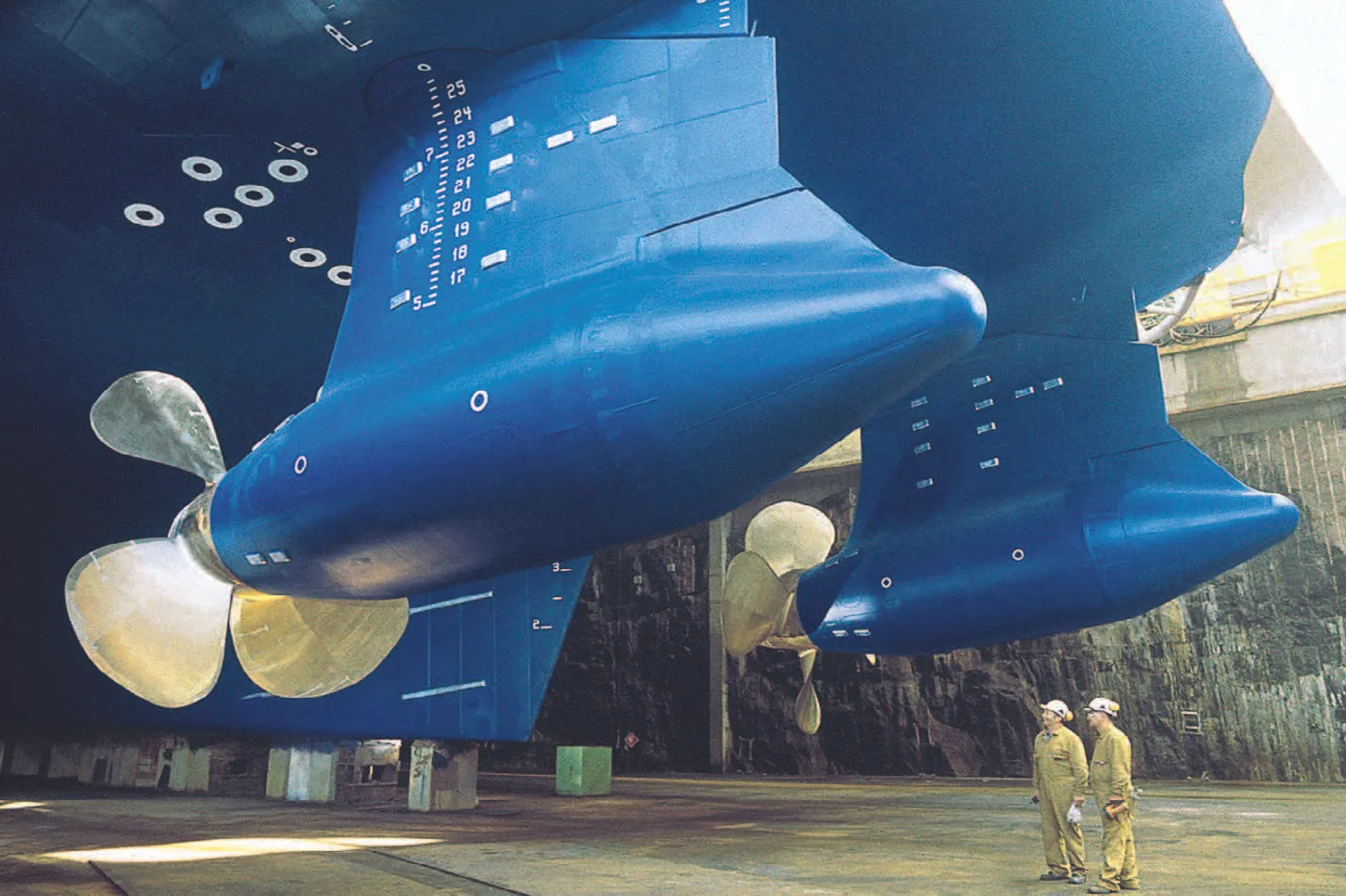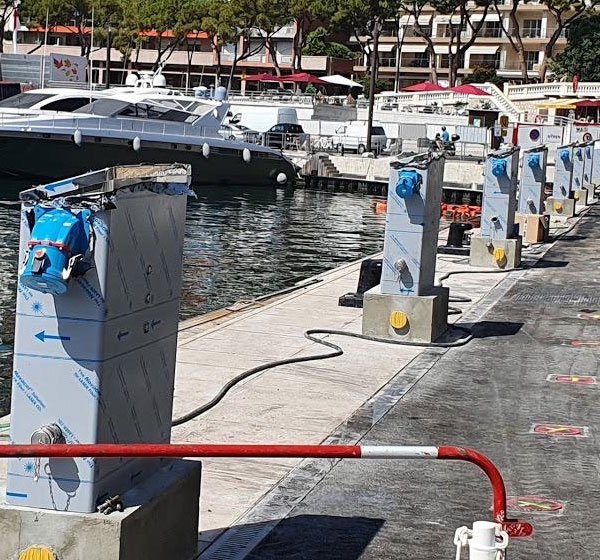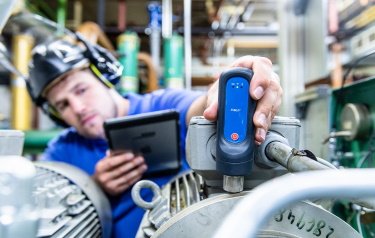
Exhaust manifolds play a vital role in the operation of marine engines, ensuring optimal performance and efficiency on ships of all sizes. These essential components manage the flow of exhaust gases from the engine cylinders to the exhaust system, allowing for safe and efficient expulsion. In this article, we will explore the significance of exhaust manifolds on ships and their key functions in maintaining the overall performance of marine engines.

What is an Exhaust Manifold?
An exhaust manifold is an integral part of the ship’s engine, designed to collect and channel exhaust gases away from the engine cylinders. It is typically constructed using durable materials such as cast iron or stainless steel, capable of withstanding high temperatures and corrosive elements present in the exhaust gases.
Function of Exhaust Manifolds
The primary function of an exhaust manifold is to collect the hot and toxic exhaust gases produced during the combustion process and direct them safely out of the engine. Key functions of exhaust manifolds on ships include:
a. Exhaust Gas Collection: The manifold collects the exhaust gases from each individual cylinder of the engine, channeling them into a single outlet. This consolidation ensures a smoother and more efficient flow of gases.
b. Equal Distribution: The exhaust manifold ensures that exhaust gases from all cylinders are evenly distributed and reach the outlet simultaneously. This balance helps maintain the performance and longevity of the engine.
c. Heat Management: Exhaust manifolds are designed to efficiently manage the extreme heat generated during the combustion process. They use specialized insulation or cooling techniques to prevent excessive heat build-up, protecting nearby components and reducing the risk of damage.
d. Noise Reduction: Another important function of the exhaust manifold is to reduce noise levels generated by the engine. By carefully directing and channelling the exhaust gases, the manifold helps dampen the noise produced during the combustion process, contributing to a quieter and more comfortable onboard environment.

Types of Exhaust Manifolds
Exhaust manifolds on ships can be categorized into two main types:
a. Wet Manifolds: Wet manifolds are commonly used in marine engines where seawater is utilized for cooling. These manifolds have water jackets that surround the exhaust gas passages, allowing water to circulate and absorb excess heat. This type of manifold offers efficient cooling and helps prevent corrosion caused by seawater exposure.
b. Dry Manifolds: Dry manifolds are employed in engines that rely on air as coolant other than seawater. Unlike wet manifolds, these do not have water jackets. Instead, they focus on efficiently directing exhaust gases and reducing noise levels.
Exhaust manifolds are a critical component of marine engines, playing a vital role in the safe and efficient operation of ships. By collecting, equalizing, and directing exhaust gases away from the engine cylinders, exhaust manifolds contribute to improved performance, reduced noise levels, and overall engine longevity. Understanding the significance of exhaust manifolds enables ship operators and engineers to appreciate their essential role and ensure their proper maintenance, leading to enhanced efficiency and reliability in marine operations.

Pros and Cons
Pros of Wet Exhaust Manifolds on Ships
Effective Cooling: Wet exhaust manifolds utilize water jackets to surround the exhaust gas passages, allowing for efficient cooling. The circulation of seawater helps dissipate heat, preventing excessive temperature build-up and reducing the risk of damage to the manifold and surrounding components.
Corrosion Prevention: Seawater acts as a natural coolant in wet exhaust manifolds, minimizing the chances of corrosion caused by the hot exhaust gases. The water circulating through the manifold helps prevent the accumulation of corrosive substances, prolonging the lifespan of the manifold and reducing maintenance requirements.
Improved Safety: Wet exhaust manifolds offer an added safety benefit by reducing the risk of fire. The presence of water helps dampen the high temperatures of the exhaust gases, minimizing the possibility of igniting nearby flammable materials.
Quieter Operation: The cooling effect of water in wet manifolds contributes to noise reduction. By absorbing heat and dissipating it efficiently, wet manifolds help reduce noise levels, resulting in a quieter onboard environment.
Cons of Wet Exhaust Manifolds on Ships
Increased Complexity: Wet exhaust systems are more complex compared to dry systems due to the additional components required for water circulation, such as pumps, heat exchangers, and associated plumbing. This complexity can result in higher installation and maintenance costs.
Limited Coolant Options: Wet manifolds are designed specifically for seawater cooling. This limitation means that ships operating in freshwater or other environments where seawater is not readily available may face challenges in implementing wet exhaust systems.
Pros of Dry Exhaust Manifolds on Ships
Simplicity: Dry exhaust manifolds offer a simpler design without the need for water jackets or associated cooling systems. This simplicity can result in easier installation and reduced maintenance requirements, leading to cost savings.
Flexibility in Coolant Selection: Unlike wet exhaust manifolds, dry manifolds offer flexibility in choosing the coolant. Ships operating in freshwater or using alternative coolants can opt for dry manifolds, making them suitable for a wider range of environments.
Reduced Weight: Dry manifolds are typically lighter than their wet counterparts since they do not require water jackets or additional cooling components. The reduced weight can contribute to improved fuel efficiency and overall vessel performance.
Cons of Dry Exhaust Manifolds on Ships
Limited Cooling Capacity: Dry manifolds do not offer the same level of cooling capability as wet manifolds. Without the presence of a water jacket, dry manifolds rely on air or alternative coolants, which may not be as effective in dissipating heat from the exhaust gases, especially during prolonged or high-load operations.
Potential Corrosion Risk: Dry exhaust manifolds may be more susceptible to corrosion compared to wet manifolds. The absence of a water jacket means that the manifold is exposed directly to hot exhaust gases, which can contain corrosive substances. Regular inspection and maintenance are essential to prevent corrosion and ensure the longevity of the manifold.
Higher Noise Levels: Dry exhaust manifolds generally offer less noise reduction compared to wet manifolds. The absence of water as a noise-dampening medium means that the exhaust gases may result in higher noise levels, potentially impacting onboard comfort.
It is important to consider the specific requirements and operational conditions of the ship when deciding between wet and dry exhaust manifolds, weighing the advantages and disadvantages of each option to determine the most suitable choice.




